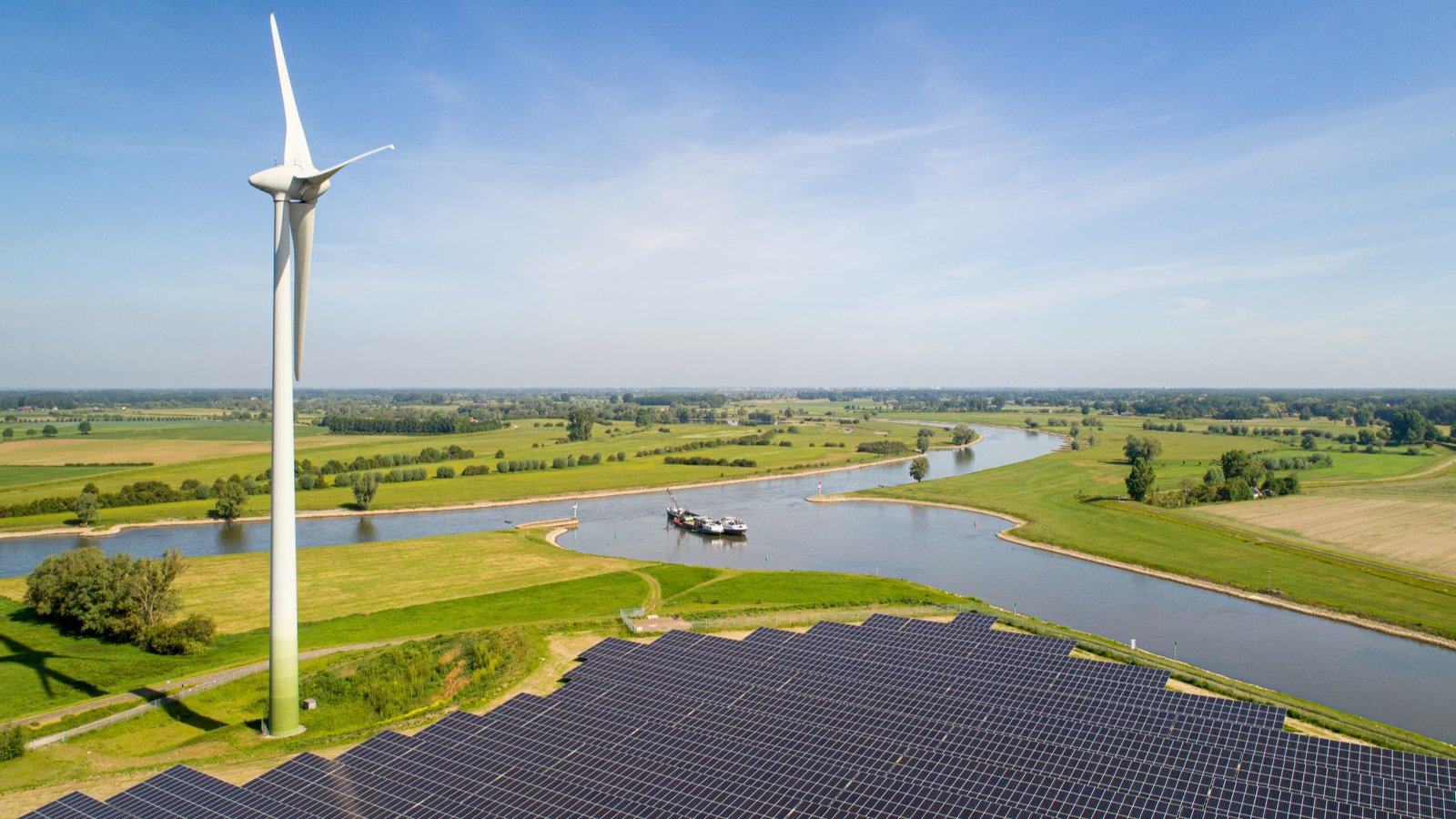Australia’s renewable energy map is being redrawn at extraordinary speed. The sector revealed plans for the world’s largest wind-and-solar hub, the launch of community-scale batteries in Perth suburbs, a half-billion-dollar push to on-shore battery manufacturing, and a quiet revolution in how households trade their rooftop power. Taken together, the announcements point to three dominant trends: giga-scale export projects racing to capture early-mover hydrogen markets; the rapid diffusion of mid-scale storage that is turning the grid inside-out; and a deepening shift from raw generation to value-added, software-driven energy services.
Below, we unpack what is driving each trend, what could derail it, and where Australia’s energy transition is likely to head next.
Executive summary
- 70 GW vision: The Western Green Energy Hub (WGEH) lodged federal environmental approval documents for a 70 GW wind-solar hybrid on the Nullarbor, dwarfing every renewable precinct on Earth.
- AU $500 million federal bet: ARENA’s new Battery Manufacturing Initiative aims to move Australia from “dig-and-ship” to “make-and-ship” cells and packs.
- Suburbs as power plants: Five new community batteries in Perth will soak up excess rooftop PV under AU $2.5 million federal grant, part of a national 400-battery roll-out.
- Microgrid momentum: Diesel-reliant towns in SA and WA are switching to solar-battery microgrids, cutting fuel burn by up to 80 %.
- Grid reliability outlook: AEMO’s 2025 ESOO shows a record 4.4 GW of new renewable generation and storage commissioned in 2024-25, keeping the NEM within reliability standards to 2034-35.
Behind the headlines lies a common driver: the collapse in solar costs and the arrival of reliable, mass-market batteries are now powerful enough to displace not only fossil-fuel generation but also traditional approaches to network investment.
The Nullarbor gambit: can Australia really build 70 GW in the desert?
The WGEH proposal is staggering on every metric. 3,000 wind turbines and 35 solar farms spread over 15,000 km², feeding electrolysers to produce 3.5 Mt of green hydrogen or 20 Mt of green ammonia annually. At 70 GW it would be more than ten times the size of the current largest operating renewable precinct (China’s Golmud Solar Park) and single-handedly lift Australia’s total renewable capacity by roughly 40 %.
Drivers
- Export demand: Japan and Korea have legislated hydrogen import targets of 3 Mt each by 2030; Europe’s REPowerEU aims for 10 Mt of renewable hydrogen imports by the same year.
- Resource quality: Wind capacity factors on the south-east Nullarbor exceed 55 %, while solar sits above 28 %, a world-class hybrid resource.
- Land availability: Sparse pastoral leases and low biodiversity conflicts make environmental approvals comparatively easier than on the east-coast escarpment.
Risks and watch-points
- Transmission: The project requires a new 1,600 km HVDC line to the coast plus dedicated hydrogen pipelines. Total capex is estimated at AU $100 billion, more than the NBN.
- Water: Electrolysers need roughly 50 GL per year, equivalent to Perth’s entire scheme water supply. Seawater desalination powered by the hub itself is possible but adds cost and complexity.
- Social licence: Even remote mega-projects now face Indigenous land-use agreements and pastoralist objections; the clock on EPBC approvals has already started.
Bottom line: 70 GW will not be built by 2030; the more credible near-term horizon is a 5–10 GW first stage feeding ammonia exports from Esperance or Eucla by 2032. If successful, it will create a new global benchmark for renewable export precincts and lock in Australian hydrogen leadership for a decade.
From poles-and-wires to packets-and-protocols: the battery revolution rolls out
Australia’s battery build-out is scaling faster than even bullish forecasts anticipated. The numbers tell the story:
- Grid-scale: 4.4 GW commissioned in 2024-25, treble the previous record.
- Community-scale: 400 batteries totalling 1.2 GW are in federal funding pipelines; Perth’s five 0.5 MWh units are the latest.
- Behind-the-meter: One in three Australian households now has rooftop PV; National Renewable Network’s “zero-cost VPP” model promises free inverter battery bundles in exchange for grid-services revenue.
What’s new is not the battery hardware but the software layer above it.
- Peer-to-peer trading: UniSA and Deakin University modelling shows P2P energy sharing lifts household PV utilisation by 12-18 %, slashes evening peak demand and can undercut retailer feed-in tariffs by 20 %.
- Grid-forming inverters: Kerang’s 103 MW/206 MWh battery, bought by Thai giant Banpu, will provide synthetic inertia for western Victoria’s weak 220 kV network.
Forward implications
By 2030 Australia could host 20 GW of distributed batteries (roughly 4 million home units plus 2,000 community and commercial systems). That volume is sufficient to meet the NEM’s entire evening peak without recourse to gas peakers, provided regulators finalise standards for aggregated virtual power plants and dynamic operating envelopes.
Supply-chain on-shoring: from lithium quarry to lithium-ion value
ARENA’s AU $500 million Battery Manufacturing Initiative is the clearest signal yet that Canberra wants to capture more than the mining royalty from the energy-storage boom. The program targets:
- Cell manufacture: LFP pouch and prismatics, leveraging WA’s lithium hydroxide.
- Module assembly: 5–10 GWh per year by Australian start-ups such as Energy Renaissance and Recharge Industries.
- Recycling: Lithium, nickel and cobalt recovery rates above 90 %, feeding back into domestic supply loops.
Economics
Current landed cost of Chinese LFP cells is ~AU $80 kWh; ARENA modelling suggests domestic production can reach AU $95 kWh by 2028, with a 15 % “sovereignty premium” outweighed by freight savings and supply security for critical infrastructure.
Strategic context
The US Inflation Reduction Act and EU Net-Zero Industry Act are both offering 30-40 % capex credits for domestic battery supply chains. Without a counter-offer, Australia risks becoming a mere quarry. The AU $500 million pot is modest but, leveraged at 5:1 with private capital, could catalyse AU $2.5 billion of battery factories and 4,000 direct jobs by 2030 which is approximately the same headcount now employed in the passenger-vehicle assembly sector.
The new geography of generation: WA leads, SA experiments, ACT legislates
Western Australia dominates the news flow. The state benefits from:
- Isolated grid rules that allow faster approvals than the NEM.
- Abundant land and excellent renewable resources.
- A government committed to net-zero by 2050 and a 200 % renewable energy target (enough to power the state twice over) by 2030.
South Australia continues to pioneer microgrids and peer-to-peer models which is logical for a grid that already averages 70 % instantaneous renewable penetration. The ACT, although small, punches above its weight by legislating 100 % renewable electricity (achieved) and moving to zero-interest loans for household batteries.
The east-coast laggard is New South Wales, where news of diesel generators being wheeled into Crookwell as a stop-gap for failing power lines highlights the tension between legacy network assets and distributed renewables. Expect more political fireworks as the state’s transmission upgrades hit rural communities in the next two years.
Market outlook: reliability, revenues and the coming shake-out
Reliability
AEMO’s 2025 ESOO concludes that the NEM will remain within its reliability standard to 2034-35, underpinned by 21 GW of new utility-scale renewable generation and 11 GW of storage already in the committed pipeline. The biggest single risk is not plant availability but extreme weather like the 2023-24 El Niño saw coal units forced offline by bushfire smoke and heat stress.
Revenues
Wholesale prices are projected to stay below AU $80 MWh in real terms as renewables flood the daytime market. Developers are therefore pivoting to:
- Long-term green hydrogen or ammonia offtake agreements priced at AU $2-3 kg H₂.
- Capacity market payments for grid-forming batteries.
- Retail “energy-as-a-service” bundles combining solar, batteries, EV chargers and demand management.
Shake-out
The flood of new entrants means margins will compress. Analysts expect 30-40 % of current solar and battery retailers to consolidate or exit by 2028. Winners will be firms that control customer data, have access to cheap capital and can stack multiple revenue streams.
What to watch next
- EPBC decision on WGEH (mid-2026): the federal environment minister’s ruling will set precedents for biodiversity offsets on mega-renewables.
- ARENA battery-manufacturing grant guidelines (due December 2025): strict local content rules could make or break domestic gigafactories.
- Rule change on dynamic operating envelopes: if adopted, it will unleash the next wave of rooftop PV and batteries beyond 10 kW per phase.
- NSW transmission approvals: the HumeLink and EnergyConnect projects face state significant development hearings in 2026; delays would prolong price volatility.
Conclusion: the decade of delivery
Australia’s renewable energy story is moving from aspiration to execution. Giga-scale export projects such as the 70 GW Nullarbor hub seek to transform the Pilbara model into a hydrogen powerhouse. Simultaneously, batteries from 5 kWh home units to grid-forming 200 MWh installations, are rewiring the grid from the edge inwards. The AU $500 million ARENA battery program is a down-payment on capturing more of the value chain at home.
The next five years will not be smooth; there will be cost blow-outs, political spats and technical hiccups. But the underlying physics and economics now favour renewables to such an extent that the critical question is no longer “if” but “how fast”. If current momentum is sustained, Australia could be exporting 10 Mt of green hydrogen and hosting the world’s most decentralised, resilient electricity grid by the early 2030s.
About the Author
Dr. Muhammad Umair Manzoor is an energy and sustainability expert with over ten yearsof experience in renewable energy, power generation, and advanced energy systemmodelling. He is currently an Energy Analyst at Power Technology Research (PTR) Inc.,USA, and a Research Fellow at the University of Melbourne, focusing on techno-economic assessments of hydrogen and Power-to-X technologies in industrial applications. Previously, he worked as an Energy Consultant and CFD Engineer contributing to hydrogen combustion and green fuel projects with leading industry partners. He also conducted research at the Fraunhofer Institute for Solar Energy Systems in Germany. Dr. Manzoor holds a PhD in Mechanical Engineering from the University of Melbourne and an MSc in Power Engineering from the Technical University of Munich, Germany.

